AI-Powered Rubrics Revolutionize Assessment in Community Colleges
The Transformative Role of AI in Rubric Design
In California Community Colleges, the integration of Artificial Intelligence (AI) into educational practices is reshaping the landscape of assessment. Educators are now equipped with powerful tools to rethink traditional rubric design, making assessments more effective and equitable than ever before. This shift opens up exciting opportunities to enhance teaching and learning experiences across campuses.
At the heart of this transformation lies the ability of AI to streamline and optimize rubric creation, offering educators valuable insights and efficiencies. By leveraging AI tools, instructors can create rubrics that not only save time but also ensure fairness and accuracy in evaluations. This evolution isn't just about convenience—it's about fostering deeper engagement and better outcomes for students.
Why Assignment Design Matters
Before diving into the technicalities of AI tools, it’s critical to underscore the importance of thoughtful assignment design. A well-crafted assignment serves as the foundation upon which an effective rubric is built. Without a solid assignment framework, even the most advanced AI tools cannot deliver meaningful results.
- Clear Learning Objectives: Assignments should clearly align with course goals and learning outcomes. This ensures that every task has a clear purpose and meaning, guiding both teachers and learners toward shared objectives.
- Promotes Student Success: Thoughtfully designed assignments provide clarity and structure, empowering students to succeed. When expectations are transparent, students are more likely to engage actively and produce high-quality work.
- Facilitates AI Integration: Well-defined assignments supply the necessary details for AI tools to craft precise and relevant rubrics. By articulating learning objectives explicitly, AI can generate detailed evaluation guidelines tailored to specific tasks.
Revolutionizing Rubric Creation with AI
AI has revolutionized the way rubrics are created, drastically reducing the time required while enhancing their quality. Gone are the days of painstaking manual efforts; now, educators can focus on higher-level tasks such as refining and customizing rubrics to suit their unique teaching styles and institutional standards.
By analyzing extensive datasets of successful assessments, AI introduces innovative approaches to rubric design. It suggests novel criteria combinations and adaptive methods, pushing boundaries and encouraging creativity in instructional design. Moreover, AI minimizes unintentional biases, ensuring that rubrics remain fair and objective.
Key Steps to Leverage AI for Rubric Design
When integrating AI into rubric creation, following a systematic approach yields the best results. Here’s a step-by-step guide to getting started:
- Specify Assignment Details: Begin by clearly defining the assignment’s scope, key skills, and expected learning outcomes. Consider any specific formatting preferences, such as the number of criteria or category weights.
- Engage Iteratively: Work collaboratively with AI, reviewing its initial suggestions and fine-tuning them based on your expertise. Human oversight ensures that the final rubric reflects your unique pedagogical approach.
- Review Outputs Thoroughly: Double-check AI-generated rubrics for clarity, grammar, and vocabulary. Ensure that the language used aligns with your intended tone and style.
Pros and Cons of AI-Powered Rubrics
While AI-powered rubrics offer numerous advantages, they also come with challenges that require careful consideration:
Advantages
- Speed: AI generates rubrics rapidly, saving educators countless hours.
- Objectivity: AI minimizes subjective biases, promoting fairness in assessments.
- Innovation: AI introduces fresh perspectives and creative solutions to rubric design.
Challenges
- Misinterpretation: Some prompts may lead to unintended interpretations by AI systems.
- Guidelines Compliance: Proper instructions must be followed to achieve optimal results.
- Academic Integrity: There is a risk of misuse if AI-generated rubrics are not reviewed critically.
Frequently Asked Questions About AI-Powered Rubrics
Here are answers to common queries about integrating AI into rubric design:
Q: How can AI help with rubric design?
A: AI assists in creating comprehensive rubrics quickly and efficiently, ensuring alignment with learning objectives and reducing unintended biases. Think of it as a helpful starting point rather than a finished product.
Q: What are the key benefits of using AI in rubric creation?
A: AI enhances efficiency, promotes objectivity, and encourages innovative approaches to rubric design, leading to fairer and more effective assessments.
Q: How can I ensure fairness when using AI-powered rubrics?
A: Carefully review AI-generated rubrics, refine them with your expertise, and align them closely with your course’s learning objectives to ensure fairness.
Q: What is the best method to start with AI rubric creation?
A: Start by clearly specifying what you want in the prompts. Mention specific criteria, desired levels of complexity, and any other details that define your assignment.
Q: Why is Assignment Design important for creating great rubrics?
A: Assignment design provides the necessary context for AI tools to generate meaningful rubrics. A well-structured assignment ensures that the rubric accurately reflects the intended learning goals.

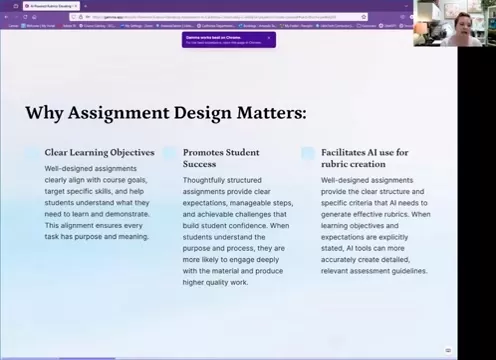
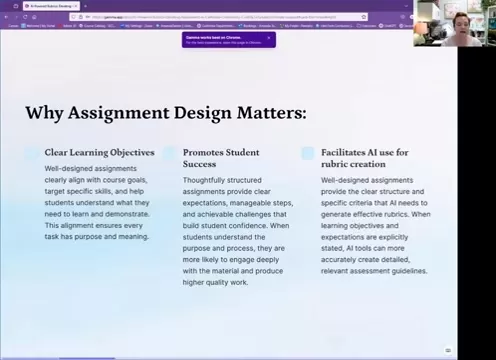
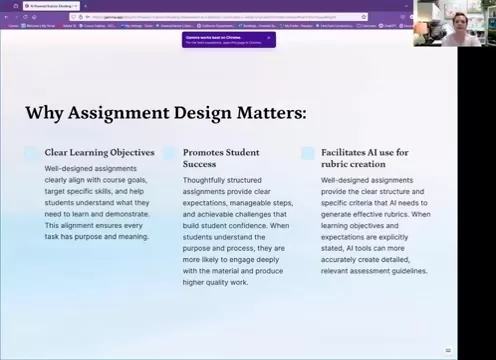
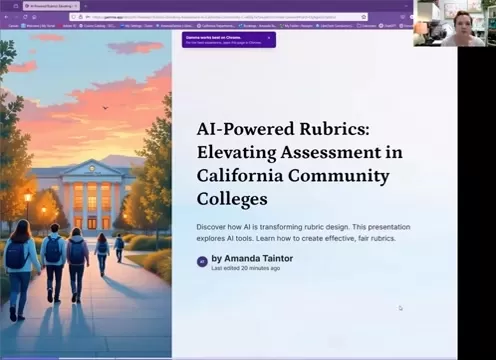
Related article
 Topaz DeNoise AI: Best Noise Reduction Tool in 2025 – Full Guide
In the competitive world of digital photography, image clarity remains paramount. Photographers at all skill levels contend with digital noise that compromises otherwise excellent shots. Topaz DeNoise AI emerges as a cutting-edge solution, harnessing
Topaz DeNoise AI: Best Noise Reduction Tool in 2025 – Full Guide
In the competitive world of digital photography, image clarity remains paramount. Photographers at all skill levels contend with digital noise that compromises otherwise excellent shots. Topaz DeNoise AI emerges as a cutting-edge solution, harnessing
 Master Emerald Kaizo Nuzlocke: Ultimate Survival & Strategy Guide
Emerald Kaizo stands as one of the most formidable Pokémon ROM hacks ever conceived. While attempting a Nuzlocke run exponentially increases the challenge, victory remains achievable through meticulous planning and strategic execution. This definitiv
Master Emerald Kaizo Nuzlocke: Ultimate Survival & Strategy Guide
Emerald Kaizo stands as one of the most formidable Pokémon ROM hacks ever conceived. While attempting a Nuzlocke run exponentially increases the challenge, victory remains achievable through meticulous planning and strategic execution. This definitiv
 AI-Powered Cover Letters: Expert Guide for Journal Submissions
In today's competitive academic publishing environment, crafting an effective cover letter can make the crucial difference in your manuscript's acceptance. Discover how AI-powered tools like ChatGPT can streamline this essential task, helping you cre
Comments (5)
0/200
AI-Powered Cover Letters: Expert Guide for Journal Submissions
In today's competitive academic publishing environment, crafting an effective cover letter can make the crucial difference in your manuscript's acceptance. Discover how AI-powered tools like ChatGPT can streamline this essential task, helping you cre
Comments (5)
0/200
![JackMartinez]() JackMartinez
JackMartinez
 September 25, 2025 at 6:30:31 PM EDT
September 25, 2025 at 6:30:31 PM EDT
¡Por fin una aplicación práctica del AI en educación! 🎓 Me encanta que se enfoquen en community colleges, donde la personalización es clave. Ojalá esto ayude a reducir la carga de trabajo de los profesores y mejore la retroalimentación a los estudiantes. ¿Alguien sabe si están usando modelos open-source o es tecnología propia?


 0
0
![MatthewTaylor]() MatthewTaylor
MatthewTaylor
 August 18, 2025 at 9:00:59 AM EDT
August 18, 2025 at 9:00:59 AM EDT
This AI rubric stuff sounds cool, but I wonder if it’ll make grading too robotic. 🤔 Humans still need to vibe with students’ creativity, right?


 0
0
![RyanPerez]() RyanPerez
RyanPerez
 August 12, 2025 at 3:01:00 PM EDT
August 12, 2025 at 3:01:00 PM EDT
This AI rubric stuff sounds cool, but will it make grading fairer or just overcomplicate things? 🤔 Curious to see how it plays out in community colleges!


 0
0
![PeterRodriguez]() PeterRodriguez
PeterRodriguez
 July 27, 2025 at 9:20:02 PM EDT
July 27, 2025 at 9:20:02 PM EDT
This AI rubric stuff sounds cool, but I wonder if it’ll make grading too robotic? Like, will it miss the human touch in evaluating creativity? Still, it’s exciting to see tech making things easier for teachers! 😄


 0
0
![FrankJackson]() FrankJackson
FrankJackson
 July 27, 2025 at 9:19:05 PM EDT
July 27, 2025 at 9:19:05 PM EDT
This AI rubric stuff sounds cool, but I wonder if it’ll make grading too robotic. Like, will it catch the vibe of a student’s creativity or just spit out numbers? 🤔 Still, it’s dope to see community colleges stepping up with tech!


 0
0
The Transformative Role of AI in Rubric Design
In California Community Colleges, the integration of Artificial Intelligence (AI) into educational practices is reshaping the landscape of assessment. Educators are now equipped with powerful tools to rethink traditional rubric design, making assessments more effective and equitable than ever before. This shift opens up exciting opportunities to enhance teaching and learning experiences across campuses.
At the heart of this transformation lies the ability of AI to streamline and optimize rubric creation, offering educators valuable insights and efficiencies. By leveraging AI tools, instructors can create rubrics that not only save time but also ensure fairness and accuracy in evaluations. This evolution isn't just about convenience—it's about fostering deeper engagement and better outcomes for students.
Why Assignment Design Matters
Before diving into the technicalities of AI tools, it’s critical to underscore the importance of thoughtful assignment design. A well-crafted assignment serves as the foundation upon which an effective rubric is built. Without a solid assignment framework, even the most advanced AI tools cannot deliver meaningful results.
- Clear Learning Objectives: Assignments should clearly align with course goals and learning outcomes. This ensures that every task has a clear purpose and meaning, guiding both teachers and learners toward shared objectives.
- Promotes Student Success: Thoughtfully designed assignments provide clarity and structure, empowering students to succeed. When expectations are transparent, students are more likely to engage actively and produce high-quality work.
- Facilitates AI Integration: Well-defined assignments supply the necessary details for AI tools to craft precise and relevant rubrics. By articulating learning objectives explicitly, AI can generate detailed evaluation guidelines tailored to specific tasks.
Revolutionizing Rubric Creation with AI
AI has revolutionized the way rubrics are created, drastically reducing the time required while enhancing their quality. Gone are the days of painstaking manual efforts; now, educators can focus on higher-level tasks such as refining and customizing rubrics to suit their unique teaching styles and institutional standards.
By analyzing extensive datasets of successful assessments, AI introduces innovative approaches to rubric design. It suggests novel criteria combinations and adaptive methods, pushing boundaries and encouraging creativity in instructional design. Moreover, AI minimizes unintentional biases, ensuring that rubrics remain fair and objective.
Key Steps to Leverage AI for Rubric Design
When integrating AI into rubric creation, following a systematic approach yields the best results. Here’s a step-by-step guide to getting started:
- Specify Assignment Details: Begin by clearly defining the assignment’s scope, key skills, and expected learning outcomes. Consider any specific formatting preferences, such as the number of criteria or category weights.
- Engage Iteratively: Work collaboratively with AI, reviewing its initial suggestions and fine-tuning them based on your expertise. Human oversight ensures that the final rubric reflects your unique pedagogical approach.
- Review Outputs Thoroughly: Double-check AI-generated rubrics for clarity, grammar, and vocabulary. Ensure that the language used aligns with your intended tone and style.
Pros and Cons of AI-Powered Rubrics
While AI-powered rubrics offer numerous advantages, they also come with challenges that require careful consideration:
Advantages
- Speed: AI generates rubrics rapidly, saving educators countless hours.
- Objectivity: AI minimizes subjective biases, promoting fairness in assessments.
- Innovation: AI introduces fresh perspectives and creative solutions to rubric design.
Challenges
- Misinterpretation: Some prompts may lead to unintended interpretations by AI systems.
- Guidelines Compliance: Proper instructions must be followed to achieve optimal results.
- Academic Integrity: There is a risk of misuse if AI-generated rubrics are not reviewed critically.
Frequently Asked Questions About AI-Powered Rubrics
Here are answers to common queries about integrating AI into rubric design:
Q: How can AI help with rubric design?
A: AI assists in creating comprehensive rubrics quickly and efficiently, ensuring alignment with learning objectives and reducing unintended biases. Think of it as a helpful starting point rather than a finished product.
Q: What are the key benefits of using AI in rubric creation?
A: AI enhances efficiency, promotes objectivity, and encourages innovative approaches to rubric design, leading to fairer and more effective assessments.
Q: How can I ensure fairness when using AI-powered rubrics?
A: Carefully review AI-generated rubrics, refine them with your expertise, and align them closely with your course’s learning objectives to ensure fairness.
Q: What is the best method to start with AI rubric creation?
A: Start by clearly specifying what you want in the prompts. Mention specific criteria, desired levels of complexity, and any other details that define your assignment.
Q: Why is Assignment Design important for creating great rubrics?
A: Assignment design provides the necessary context for AI tools to generate meaningful rubrics. A well-structured assignment ensures that the rubric accurately reflects the intended learning goals.





 Topaz DeNoise AI: Best Noise Reduction Tool in 2025 – Full Guide
In the competitive world of digital photography, image clarity remains paramount. Photographers at all skill levels contend with digital noise that compromises otherwise excellent shots. Topaz DeNoise AI emerges as a cutting-edge solution, harnessing
Topaz DeNoise AI: Best Noise Reduction Tool in 2025 – Full Guide
In the competitive world of digital photography, image clarity remains paramount. Photographers at all skill levels contend with digital noise that compromises otherwise excellent shots. Topaz DeNoise AI emerges as a cutting-edge solution, harnessing
 Master Emerald Kaizo Nuzlocke: Ultimate Survival & Strategy Guide
Emerald Kaizo stands as one of the most formidable Pokémon ROM hacks ever conceived. While attempting a Nuzlocke run exponentially increases the challenge, victory remains achievable through meticulous planning and strategic execution. This definitiv
Master Emerald Kaizo Nuzlocke: Ultimate Survival & Strategy Guide
Emerald Kaizo stands as one of the most formidable Pokémon ROM hacks ever conceived. While attempting a Nuzlocke run exponentially increases the challenge, victory remains achievable through meticulous planning and strategic execution. This definitiv
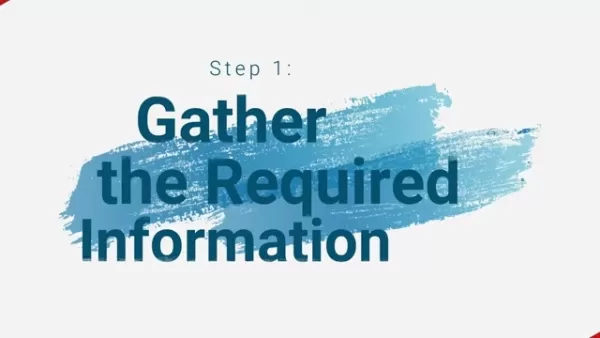 AI-Powered Cover Letters: Expert Guide for Journal Submissions
In today's competitive academic publishing environment, crafting an effective cover letter can make the crucial difference in your manuscript's acceptance. Discover how AI-powered tools like ChatGPT can streamline this essential task, helping you cre
AI-Powered Cover Letters: Expert Guide for Journal Submissions
In today's competitive academic publishing environment, crafting an effective cover letter can make the crucial difference in your manuscript's acceptance. Discover how AI-powered tools like ChatGPT can streamline this essential task, helping you cre
 September 25, 2025 at 6:30:31 PM EDT
September 25, 2025 at 6:30:31 PM EDT
¡Por fin una aplicación práctica del AI en educación! 🎓 Me encanta que se enfoquen en community colleges, donde la personalización es clave. Ojalá esto ayude a reducir la carga de trabajo de los profesores y mejore la retroalimentación a los estudiantes. ¿Alguien sabe si están usando modelos open-source o es tecnología propia?


 0
0
 August 18, 2025 at 9:00:59 AM EDT
August 18, 2025 at 9:00:59 AM EDT
This AI rubric stuff sounds cool, but I wonder if it’ll make grading too robotic. 🤔 Humans still need to vibe with students’ creativity, right?


 0
0
 August 12, 2025 at 3:01:00 PM EDT
August 12, 2025 at 3:01:00 PM EDT
This AI rubric stuff sounds cool, but will it make grading fairer or just overcomplicate things? 🤔 Curious to see how it plays out in community colleges!


 0
0
 July 27, 2025 at 9:20:02 PM EDT
July 27, 2025 at 9:20:02 PM EDT
This AI rubric stuff sounds cool, but I wonder if it’ll make grading too robotic? Like, will it miss the human touch in evaluating creativity? Still, it’s exciting to see tech making things easier for teachers! 😄


 0
0
 July 27, 2025 at 9:19:05 PM EDT
July 27, 2025 at 9:19:05 PM EDT
This AI rubric stuff sounds cool, but I wonder if it’ll make grading too robotic. Like, will it catch the vibe of a student’s creativity or just spit out numbers? 🤔 Still, it’s dope to see community colleges stepping up with tech!


 0
0





























